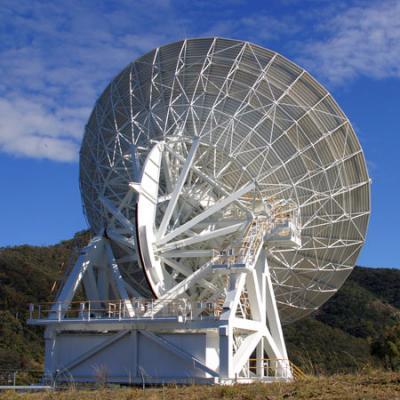Astronomers has begun to map the location of the most massive and mysterious objects in our galaxy – the Southern Milky Way and its giant gas clouds, where new stars are born.
Using the 22 meter Mopra millimetre wave telescope at Coonabarabran, the team identifies the galactic clouds of molecular gas - which can be up to 100 light years across from the carbon monoxide they contain.
Some of the options for how large giant molecular clouds form include the gravitational collapse of an ensemble of small clouds into a larger one, or the random collision of small clouds which then agglomerate.
Their first paper on the work covers a region of the sky about the size of four full moons. About one star per year, on average, is formed in the Milky Way. Stars that explode and die then replenish the gas clouds, as well as moving the gas about and mixing it up.
"On Earth, carbon monoxide is poisonous – a silent killer. But in space, it is the second most abundant molecule and the easiest to see," says Professor Michael Burton, of the University of New South Wales School of Physics, who leads the team. "One of the largest unresolved mysteries in galactic astronomy is how these giant, diffuse clouds form in the interstellar medium. This process plays a key role in the cosmic cycle of birth and death of stars."

The Mopra Telescope in Coonabarabran, NSW, Australia, that is used to map the location of the giant gas clouds in the Milky Way where stars are born. Credit: UNSW
Using telescopes in Antarctica and Chile, team is also searching for "dark" galactic gas clouds – unseen clouds that contain very little carbon monoxide. It is assumed these clouds are mostly made up of molecular hydrogen which is too cold to detect so they detect the presence of carbon atoms, rather than carbon molecules, in the clouds.
Dark clouds, if found, could also be the "missing" source of gamma rays, which are produced when high-energy cosmic rays interact with the nuclei of gas atoms or molecules they encounter when travelling through space.
"The source of more than 30 per cent of gamma rays remains unidentified – another big mystery our research could throw light on," says Burton.
Citation: Michael G. Burton, C. Braiding, C. Glueck, P. Goldsmith, J. Hawkes, D. J. Hollenbach, C. Kulesa, C. L. Martin, J. L. Pineda, G. Rowell, R. Simon, A. A. Stark, J. Stutzki, N. J. H. Tothill, J. S. Urquhart, C. Walker, A. J. Walsh and M. Wolfire, 'The Mopra Southern Galactic Plane CO Survey', Publications of the Astronomical Society of Australia 14 August 2013 DOI: 10.1017/pasa.2013.22





Comments